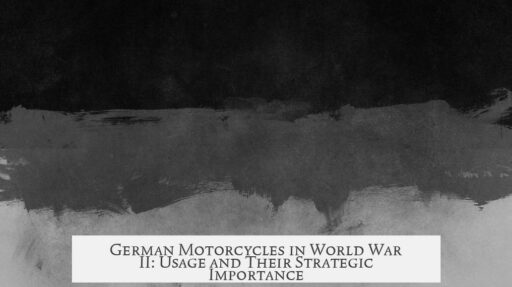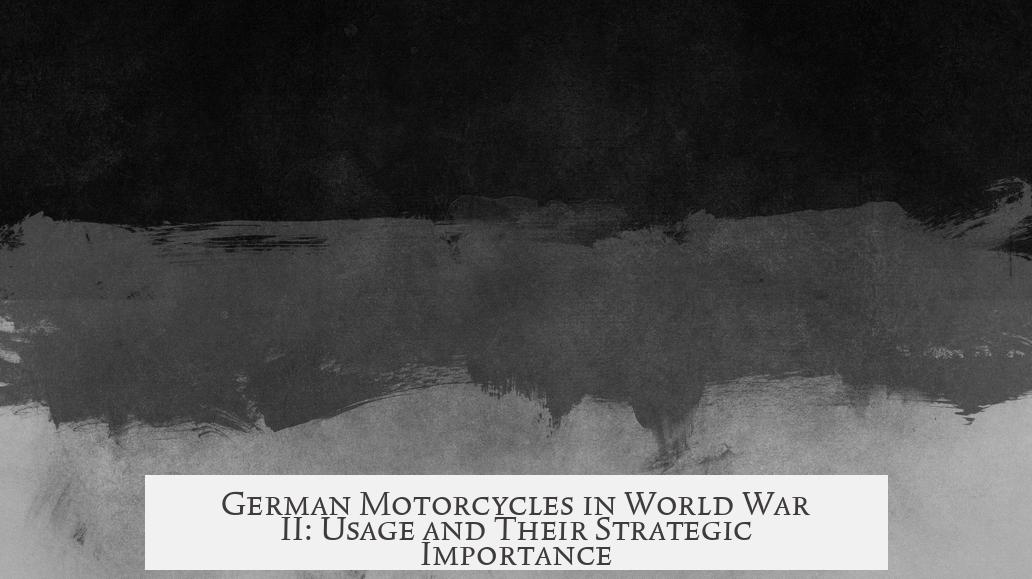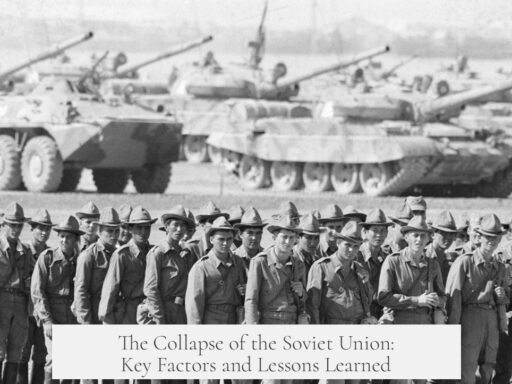German motorcycles in World War II served primarily as versatile support and reconnaissance vehicles rather than front-line combat machines. Their use stemmed from the need to enhance mobility, communication, and flexible deployment of light weapons within Panzer divisions and other units. Germany employed a wide range of motorcycles, including models equipped with sidecars capable of mounting machine guns, such as the BMW R75 and Zündapp KS 750, to fulfill these roles effectively.
Motorcycles featured prominently in several capacities. These included reconnaissance missions, transportation of troops and supplies, courier services, and quick deployment of weapons teams. Their relatively small size enabled access to locations unreachable by heavier vehicles. This made them crucial for supporting operations in challenging terrain and rapid battlefield movements.
Though agile, motorcycles had significant limitations in direct combat. They lacked armor, leaving riders and passengers exposed to small arms fire. Their modest off-road speed reduced their effectiveness and increased vulnerability, particularly in combat zones. As a result, motorcycles functioned mainly as auxiliaries, carrying machine gun teams, mortar units, or anti-tank squads quickly to strategic points.
German military doctrine integrated motorcycles deeply within the Panzer divisions to maximize combined arms effectiveness. For example, the 6th Panzer Division in May 1940 included a dedicated motorcycle battalion. This battalion comprised three motorcycle companies armed with a mix of 18 light machine guns, 2 heavy machine guns, and 3 light trench mortars. Support came from additional machine gun companies and light infantry columns.
Similarly, the division’s reconnaissance battalion operated a motorcycle squadron equipped with several light and heavy machine guns, plus light trench mortars. Such formations allowed rapid gathering of intelligence and flexible engagement using firepower on the move.
| Unit | Weaponry | Role |
|---|---|---|
| Motorcycle battalion (6th Panzer Div.) | 18 Light MGs, 2 Heavy MGs, 3 Light trench mortars | Support weapons deployment |
| Machine gun company (6th Panzer Div.) | 8 Heavy MGs, 6 Medium trench mortars, 3 Anti-tank guns | Heavy support firepower |
| Reconnaissance motorcycle squadron | 9 Light MGs, 2 Heavy MGs, 3 Light trench mortars | Reconnaissance & rapid engagement |
Outside of direct combat units, motorcycles also supported roles in signal battalions, military police, medical services, and quartermaster units. Their ability to transport messages, supplies, and sometimes injured soldiers efficiently in difficult environments was valuable for maintaining operational cohesion.
German motorcycles originated from several manufacturers. In addition to domestic producers such as BMW and Zündapp, models were procured from occupied territories, including the Danish Nimbus motorcycle. Their design often included attachable sidecars capable of mounting machine guns, enhancing their firepower beyond that of standard motorcycles.
Their tactical deployment focused largely on rapid movement capabilities. Motorcycles enhanced the flexibility of armored divisions by enabling quick repositioning of small infantry teams with light support weapons. This mobility complemented the larger tanks and mechanized infantry by increasing battlefield responsiveness and adaptability.
Despite the benefits, motorcycles were not substitutes for armored vehicles. Their exposure to enemy fire and mechanical limitations restricted them to support and reconnaissance roles. They served to maximize the speed and coordination of German forces during engagements rather than to bear the brunt of combat directly.
In summary, German motorcycles in World War II were pivotal in enhancing the mobility and coordination of Panzer divisions and other units. They provided vital support, reconnaissance, and rapid deployment capabilities, leveraging light weaponry and speed rather than armored protection.
- Motorcycles mainly supported reconnaissance, courier, and rapid weapons deployment roles.
- BMW R75 and Zündapp KS 750 were well-known models with sidecars able to mount machine guns.
- Motorcycles had minimal armor, limiting their use in direct combat.
- Included in Panzer divisions to boost flexibility and mobility, as exemplified by the 6th Panzer Division’s motorcycle battalion.
- Also served support units like signals, medical, quartermaster, and military police.




